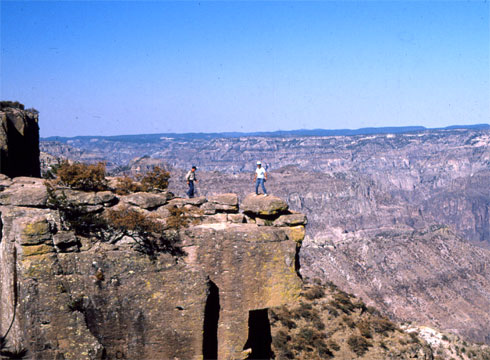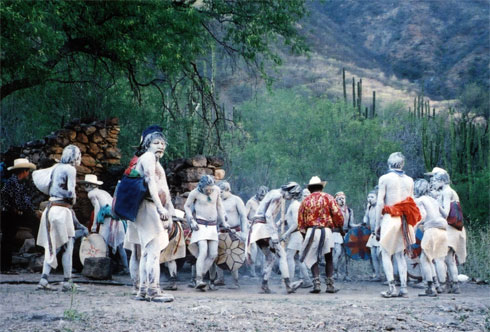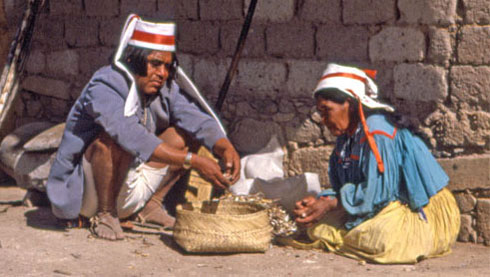About thirty years ago I first became aware of Copper Canyon when a travel writer friend of mine returned from a journey to Northern Mexico.
“Lee, you have to see Copper Canyon,” he insisted. “It’s magnificent!!” After viewing his slides I became excited and traveled to the Sierra Madre mountains of Northern Mexico to explore this remote area. Since then, over the last thirty years, we have introduced thousands of people to this fascinating area of mountains, rivers and canyons, and to the Tarahumara, the indigenous people who make this rugged land their home.
The Canyons

Long ago, about a hundred million years, a huge plateau arose in an area that is now part of northern Mexico. Seventy million years passed before volcanoes erupted and flooded the plateau with molten rock. Rivers then sliced this lava-covered plateau into deep twisting canyons—the largest area of canyons in North America.
Between the volcanic layers and the old plateau are rich mineral deposits. The depth of the canyons exposes these layers, making the gold, silver, and copper accessible for mining. It is from the abundant copper ore that the area derives its name—Copper Canyon.
The Miners
The first people to mine the ore were the Spaniards, in 1632. Over the centuries, hundreds of mines were worked, peaking at the end of the 19th century when 20 million ounces of silver were extracted from the mines at Batopilas, making Copper Canyon one of the richest silver mining areas in the world.
The Tarahumara

The longest term residents of Copper Canyon are the Tarahumara Indians. No one knows how long they have lived here, but archaeologists have found artifacts of people living in the area 3000 years ago.
Francisco Vasquez de Coronado’s expedition, which passed through the Sierra Madres in 1540, in search of the legendary Seven Golden Cities of Cibola, may have been the first contact between the Tarahumara and Europeans.
The Jesuits
In 1607 the Jesuits established the first of their 29 missions to be built in the canyons and introduced the Tarahumara to Catholicism, domestic animals and the plow.
When the Spaniards discovered the rich mineral wealth in the canyons, they forced the Indians to work as slaves in the mines. This led to many bloody revolts throughout the 17th century.
The influence of the Jesuits came to a halt in 1767 when the King of Spain expelled their order from the New World. In the canyons there are legends of treasure hidden by the Jesuits during their rapid departure). The Franciscans took over from the Jesuits, but the Indians were pretty much left alone until the Jesuits returned in 1900.
The Tarahumara Today
Today the Tarahumara number around 60,000. They live in caves and small cabins and practice subsistence farming. The majority practice a form of Catholicism liberally intermixed with their traditional beliefs and ceremonies. Among the peoples of North America, they are considered to be the least touched by modern civilization and the most unmixed of any of the Indian tribes of Mexico.

